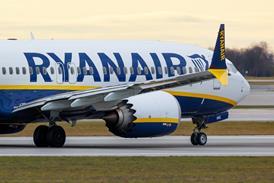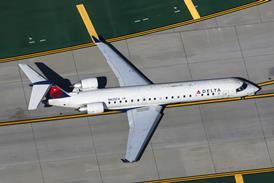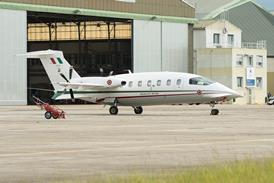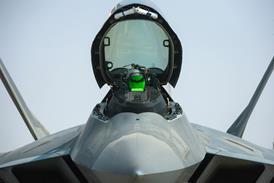Guy Norris/LOS ANGELES
CFM INTERNATIONAL is challenging the competitive claims of International Aero Engines (IAE), as the manufacturer of V2500 celebrates a successful first flight on the Airbus A319 at Toulouse on 22 May.
The planned culmination of the 200h A319 flight-test programme in December, plus the continuing V2500-powered A321-200 certification effort, means that IAE's goal of powering every member of the Airbus narrowbody family is now within sight. International Lease Finance is set to be the first customer to take delivery, in 1997.
IAE president and chief executive Barry Eccleston says that the company's share of the Airbus market is still growing. "Overall, we've taken 36% of the A320 market since the engine was launched and, since the V2500 entered service, this has grown to 54%," he says. Since the end of 1992, some 80% of operators of the A319/320/321 family have chosen the V2500, he adds, pointing out that the -A5 engine is essentially the same across the thrust range of 98-147kN (22,000-33,000lb), with only software changes required.
IAE now holds firm and option positions on 724 aircraft, of which 369 are firm orders for Airbus twins and 120 for McDonnell Douglas MD-90s. Including options, the engine total stands at around 1,600, with just over 500 delivered.
Gerard Laviec, president of CFM International, hits back by saying that IAE's competitive claims are exaggerated. "Setting the record straight," he says that IAE's claimed fuel-consumption advantage is "only one aspect of cost". CFMI claims a better shop-visit rate and fewer life-limited parts. "The savings, in just these two aspects, outweigh the competitor's small fuel advantage by a factor of ten, or more," he says.
Laviec adds that Airbus states that the fuel-consumption difference is "as little as 1.8%", against IAE claims of at least 6%. With the CFM56's "low deterioration rate", the difference will be further diminished during service, he says.
In the area of foreign-object damage (FOD), where IAE's wide-chord fan is said to be superior, CFM counters that only 3% of bird ingestions result in engine removal (the same as for its competitor), while about 45% result in no damage at all, which puts it ahead. CFM goes on to add that the "-less expensive CFM56 blade is easily repaired at many existing sources", putting FOD-related costs per engine flight-hour at about half those of the IAE product and not at the $200,000 claimed by its rival. IAE disputes both of the estimates.
In the marketplace, the current competitive position is dominated by the battle to power A320s ordered recently in Asia by China and Asiana of South Korea. "China Southern, which will probably operate some of those, will need to make a decision soon and we're working hard to get the engine choice," says Eccleston. Sources suggest that this deal may have been already concluded.
Source: Flight International























